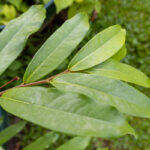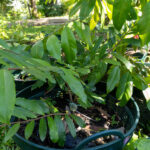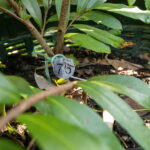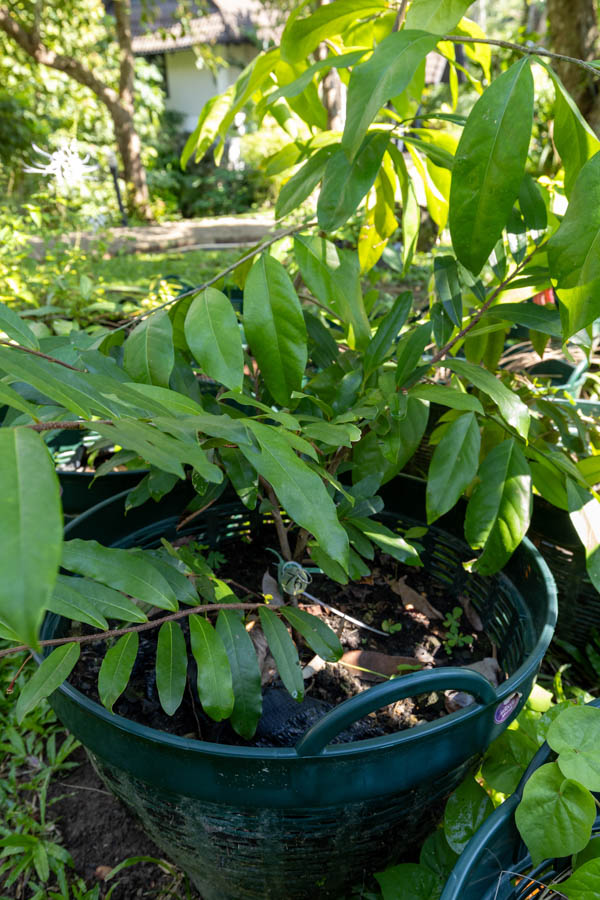อบเชย (Ob Choey) / True Cinnamon
Family: Lauraceae
Cinnamomum verum, known in Thai as อบเชย (Ob Choey), is a small evergreen tree cultivated for its aromatic bark and leaves. It is one of the oldest and most valuable spices in both culinary and medicinal traditions. In Thai herbal medicine, it is used to improve circulation, aid digestion, and strengthen vitality.
Botanical Characteristics
The tree grows up to 10 meters tall with smooth brown bark and glossy, lanceolate leaves arranged alternately along reddish stems. When crushed, the leaves release a warm, sweet-spicy fragrance. Small yellowish flowers appear in clusters, followed by dark purple berries.
Use in Thai Traditional Medicine
อบเชย is valued for its warming energy. It stimulates appetite, relieves bloating, and improves blood flow. The bark and leaves are used in decoctions to treat colds, menstrual discomfort, and fatigue. Ground cinnamon is also blended into herbal tonics to strengthen the heart and lungs.
Medicinal Compounds
Rich in cinnamaldehyde, eugenol, and coumarin, compounds with antimicrobial, anti-inflammatory, and antioxidant properties. These substances enhance metabolism, regulate blood sugar, and help the body resist infection.
Culinary and Nutritional Uses
Cinnamon is widely used in Thai and global cuisine to flavor curries, desserts, and herbal teas. It adds depth and warmth to sweet and savory dishes alike while supporting digestion and immune balance.
Cultivation Notes
Cinnamomum verum prefers humid tropical climates, partial shade, and well-drained loamy soil. Bark can be harvested after 3–5 years when stems mature. Regular pruning promotes new shoot growth and maintains tree vigor.
Disclaimer: This information is provided for educational and historical purposes only. It is not intended as medical advice. Always consult a qualified healthcare professional before using any herbal preparation.




